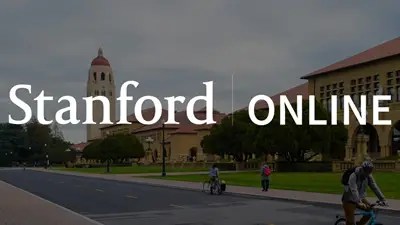
Calculus 2 is an advanced mathematical course that focuses primarily on Integration and Differentiation. The Riemann number is the principal weapon for integrals. The Riemann sum is the main weapon for integrals. It can be used in many applications, including the area under curve, volume of solids and work. Although integrals are not easy to understand, they are critical for many mathematical applications.
Integral calculus
Integral Calculus is a mathematical subject that deals with the study and application of functions. It includes a wide range of topics such as the study of functions of many variables and derivatives. This topic eventually leads us to the fundamental theories of calculus. You can find many examples of integral calculus.
Integral calculus focuses on the study of integrals, and derivatives. The derivative is a function that has an integral value. An integral is any function that departs from its origin. This type can be positive, negative, or zero.

Differentiation
Differentiation in calculus 2 has two main focus points: Integration and Riemann sums. All variations of the U Substitution formula are used to integrate. Integration is used in the following areas: volumes of solids; work; and volumes under curves. While integration is a fundamental concept in all math disciplines, students often have difficulties understanding them.
Differentiation, a fundamental concept in calculus, is key. It describes the rate at which a function is changing relative to a variable. Although often used to indicate the rate of change in functions, the term derivative can also be used. It can also be used to measure the change in a function per unit change in an independent variable. For a clear understanding, let's consider an example. Consider a function y = f(x). It is written as dy/dx in the Euler's Notation. Lagrange's notation says that the function of y=fx.
Trigonometric equations
Trigonometric operations can be used for describing a wide range of phenomena. They can be used to model sound waves, vibrations of strings, motion of pendulums and any other repetitive motion. This chapter will explain the basics of trigonometric functions as well as the main identities.
These identities are useful in solving the integrals, derivatives and limits of trig functions. These identities will be most useful when you are working on integrals for the no-calculator portion of the test. A Unit Circle will also be taught to calculate the sine and cosine of an angle.

Prerequisites
Calculus 2 needs several prerequisites. These include Algebra I (and Calculus II), elementary geometry, as well as an introductory course in analysis known precalculus. Calculus requires knowledge of functions and their graphs. A strong background in mathematics is also important for students.
Calculus II introduces students to the concepts of integral and differential calculus. They will also acquire skills in solving integration and power series problems. They will also learn to interpret and translate results into everyday language.
FAQ
Is becoming a teacher difficult?
Becoming a teacher requires a major commitment. You will need time to study.
You can expect to work 40 hours per semaine while earning your degree.
A job that is flexible with your schedule is another important consideration. Many students have trouble finding part time jobs that balance schoolwork with their lives.
After you have been offered a permanent position, you will be expected to teach classes throughout the day. You may even need to travel to different schools throughout the week.
What are the various types of early childhood education available?
There are many ways to describe early childhood education. Here are some of the most commonly used ones:
-
Preschool - Children ages 2 to 5
-
PreKindergarten - Children ages 4 to 6
-
Head Start/Headstart for Children Ages 0-3
-
Day Care/ Daycares: Children 0-5
-
Child Care Centers - Children ages 0 to 18
-
Family Child Care - Children from 0-12 Years of Age
-
Homeschooling - Children from KG to 16
What are some ways to get scholarships?
Scholarships are grants awarded to help pay for college expenses. There are many kinds of scholarships. These include:
-
Federal Grants
-
State Grants
-
Student Loans
-
Work Study Programs
-
Financial Aid
Federal grants are made directly by the U.S. government. Most federal grants require applicants to meet certain requirements. For example, you must demonstrate financial need.
State grants are offered by individual states. These grants are not always based on financial need. Some states may offer them for specific reasons.
Student loans are issued by banks and other lending institutions. Students typically borrow money to cover costs such as tuition and living expenses.
Employers can use work-study programmes to attract qualified students. Employers must pay their employees at least the minimum wage.
Financial aid can help families with low incomes afford college by covering all or part of tuition costs.
What is the average time it takes to become a teacher in early childhood?
To complete a bachelor's in early childhood education, it takes four years. Two years are required to take general education courses offered by most universities.
After you have completed your undergraduate education, you can usually apply to graduate school. This step allows one to specialize in a certain area of study.
You could, for example, choose to study learning disabilities or child psychology. After you complete your master's, it is time to apply to a teacher-preparation program.
This process will take another few years. To gain practical knowledge, you will partner with experienced educators.
Finally, before you can begin teaching, you need to pass the state exams.
This process takes several years, which means you won't be able to immediately jump right into the workforce.
When choosing a major, what factors should I consider?
The first step is to decide whether you prefer to enter a particular profession straight away or attend college. Make a list of all your talents and interests. It could be reading, listening, watching movies, talking with people, doing chores around the house, and other interests. You can be a singer, dancer, painter, writer, sewer, cook, woodwork, garden, photography, carpentry or auto mechanics. You can use your interests and talents to help you select a major.
If you are interested to be an artist, art history or fine arts might be a good choice. Biology might be a good choice if you are passionate about animals. Pre-medicine, medical technology and medicine are options for those who want to be doctors. Computer science, computer networking, or computer engineering might interest you if you want a career that involves computers. There are many choices. Just think carefully about what you'd like to do.
Statistics
- They are also 25% more likely to graduate from high school and have higher math and reading scores, with fewer behavioral problems,” according to research at the University of Tennessee. (habitatbroward.org)
- And, within ten years of graduation, 44.1 percent of 1993 humanities graduates had written to public officials, compared to 30.1 percent of STEM majors. (bostonreview.net)
- Think of the rhetorical power of nineteenth-century abolitionist Harriet Beecher Stowe, Martin Luther King, Jr., or Occupy Wall Street activists with their rallying cry of “we are the 99 percent.” (bostonreview.net)
- Data from the Department of Education reveal that, among 2008 college graduates, 92.8 percent of humanities majors have voted at least once since finishing school. (bostonreview.net)
- These institutions can vary according to different contexts.[83] (en.wikipedia.org)
External Links
How To
How do I apply to scholarships?
Before you apply for scholarship funding, ensure that you are eligible. You must meet certain criteria to be eligible for scholarships.
You may also be eligible for a grant if your family is financially poor. A vocational training course is eligible to be considered for a work study program. And you can receive a grant because you are a member of a minority group.
Once you've determined your eligibility for a specific type of scholarship, it is time to start applying.
You can apply online or in person. The process of applying varies according to the scholarship.
Some scholarships require essays that describe you and explain why you desire the money. Some ask you questions such as "Why did this major interest you?"
You must fill out an application for scholarships and attach supporting materials.
Your scholarship provider will examine the information that you submit. If you are selected, you will be notified via email or mail.
You may still be eligible for another scholarship even if you aren't selected. Contact your scholarship provider for details.